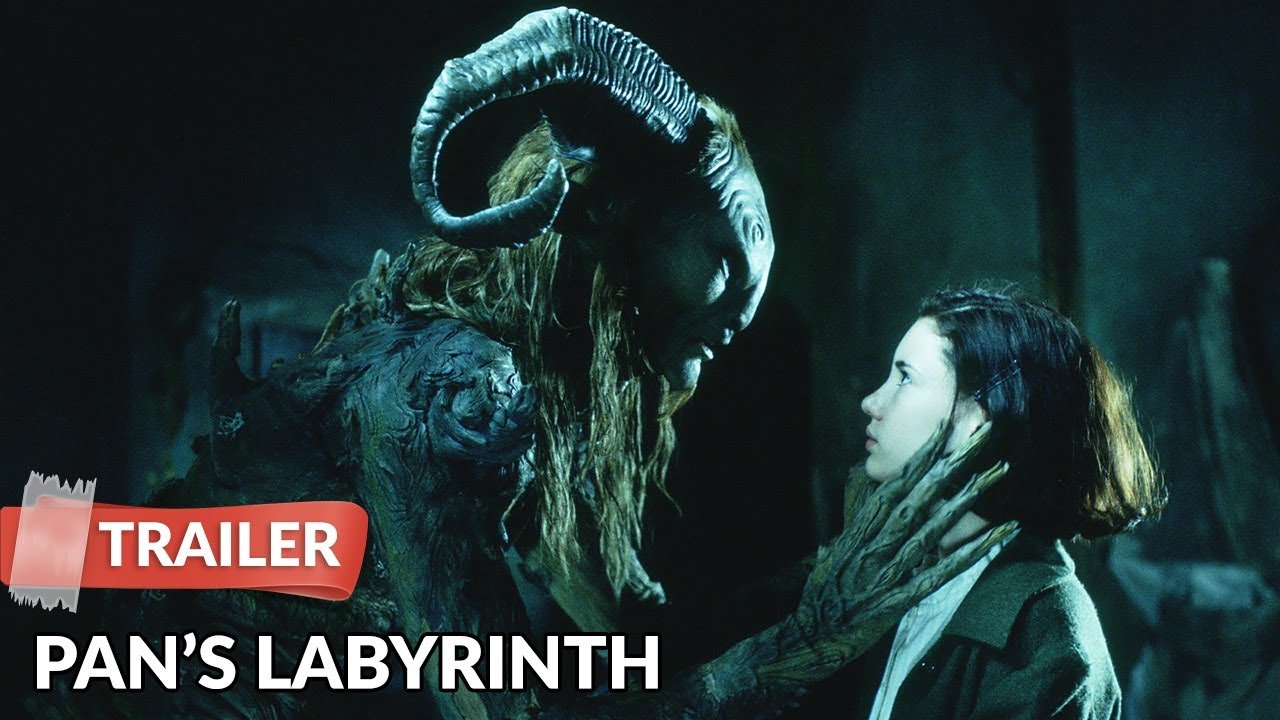Pan’s Labyrinth (2006)

Pan’s Labyrinth (originally titled El laberinto del fauno), directed, written, and co-produced by Guillermo del Toro, is a hauntingly beautiful dark fantasy film released in 2006. This Spanish-Mexican co-production stands out as a significant work in modern cinema, merging elements of fairy tale and horror to explore themes of innocence, brutality, and the power of imagination. With its captivating storytelling, rich visual style, and compelling performances, Pan’s Labyrinth has earned a place as a cinematic masterpiece.
Set against the backdrop of post-Civil War Spain in 1944, Pan’s Labyrinth tells the story of Ofelia, a young girl played by Ivana Baquero, who relocates with her pregnant mother to the countryside to live with her new stepfather, Captain Vidal, portrayed by Sergi López. Vidal is a ruthless officer in Franco’s fascist regime, and his oppressive rule sets the stage for the film’s exploration of both real and fantastical horrors.
The narrative unfolds as Ofelia discovers a mysterious labyrinth near her new home. Guided by a faun (played by Doug Jones), she learns that she is the reincarnation of a lost princess from a magical kingdom. The faun sets her three tasks to prove her royal identity and return to her rightful place. As Ofelia embarks on these tasks, she navigates a world that is as perilous and enchanting as it is dark and sinister.
Guillermo del Toro’s direction is instrumental in crafting the film’s unique atmosphere. His vision blends the stark realities of wartime Spain with a rich tapestry of fairy tale elements, creating a world where the boundaries between fantasy and reality blur. Del Toro’s use of practical effects, intricate set designs, and imaginative creatures enhances the film’s otherworldly quality. The labyrinth itself, with its eerie, ancient architecture, serves as a metaphorical space where Ofelia confronts her fears and desires.
The film’s visual style is characterized by its dark, gothic aesthetic, which underscores the tension between the harsh realities of the war and the magical elements of Ofelia’s quest. The color palette is dominated by muted tones, with the occasional burst of vivid color in the fantastical sequences. The use of shadow and light plays a crucial role in creating a sense of foreboding and wonder, immersing the audience in both the grim and fantastical aspects of the story.
The performances in Pan’s Labyrinth are deeply compelling and contribute significantly to its impact. Ivana Baquero’s portrayal of Ofelia is both delicate and powerful, capturing the character’s innocence and resilience. Her performance anchors the film, allowing the audience to empathize with her struggles and triumphs. Sergi López’s portrayal of Captain Vidal is equally striking, embodying the cruelty and authoritarianism of the regime. His presence adds a palpable sense of danger to the film, heightening the tension and stakes of Ofelia’s journey.

Maribel Verdú’s role as Mercedes, a servant who secretly aids the rebels against Vidal, adds an additional layer of complexity to the narrative. Verdú’s performance brings warmth and courage to her character, providing a contrast to the harshness of Vidal and enhancing the film’s emotional depth. Doug Jones, as the faun and the Pale Man, delivers mesmerizing performances through his physicality and nuanced portrayals of these fantastical creatures. The faun’s enigmatic presence and the Pale Man’s horrifying appearance are central to the film’s fantastical elements and thematic exploration.
The film’s score, composed by Javier Navarrete, complements its visual and narrative elements with a haunting and evocative soundtrack. The music enhances the film’s emotional resonance and atmospheric depth, seamlessly integrating with the story’s magical and dark elements. Navarrete’s compositions contribute to the film’s immersive experience, highlighting both the wonder and dread of Ofelia’s journey.

Pan’s Labyrinth is notable for its exploration of themes related to innocence, power, and the struggle between good and evil. The film examines the impact of political oppression on individuals, particularly children, and juxtaposes this with the transformative power of imagination and belief. Ofelia’s quest through the labyrinth symbolizes her struggle to reclaim her sense of self and hope in the face of an oppressive and brutal world.
The film also delves into the nature of storytelling and myth, illustrating how fairy tales and legends can offer solace and escape, even as they confront the darkest aspects of reality. Del Toro’s narrative weaves together elements of traditional fairy tales with original storytelling, creating a rich and layered text that resonates with audiences on multiple levels.

In conclusion, Pan’s Labyrinth is a remarkable film that exemplifies Guillermo del Toro’s mastery of blending dark fantasy with poignant storytelling. Through its compelling performances, innovative visuals, and evocative score, the film offers a profound and immersive experience that transcends conventional genre boundaries. As a dark fairy tale set against the backdrop of historical conflict, Pan’s Labyrinth stands as a testament to the power of imagination and the enduring impact of storytelling in confronting the complexities of human experience.











